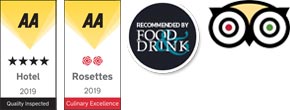June 2024
Not many people know this, but in a previous life, I was a sports journalist.
For 15 years, come rain or shine, I spent most of my working life behind a desk.
During the winter, when there was snow on the ground, it was good to be in a nice warm office.
But during the summer, when the sun was out and wearing his hat, it was not so perfect.
Now, as a gardener, it’s a complete flip around – I dread being outside in the cold weather, but I love being outside in the summer sun.
And that’s where we are now.
I may be biased, but I believe Crouchers comes to life in the summer. The relaunch of the sunset bar was a huge success, the borders and beds are bathed in colour and the potager is turning into a sea of fruit and vegetables.
It does mean Jason and I endure long days, but walking to the potager at 6.30 in the morning, coffee in hand, with the sun coming up and the birds singing is an idyll that is difficult to explain to the uninitiated.
Think Grieg’s ‘Peer Gynt – Morning Mood’.
Of course, the sun is not all about picturesque views, it is also needed to grow our vegetables, and we’re already starting to bring up the harvest for the chefs.
So far, we’ve harvested spinach, strawberries, radishes, carrots and redcurrants. The garlic is up and drying in the shed, and the chefs are already using our pea shoots, mizuna salad leaves and microgreens.
The lovely weather is also bringing you fine guests and residents down to the potager in your droves.
One very pleasant chap from Northampton was intrigued about our gooseberries, in particular how they had not been eaten alive by caterpillars – unlike his at home.
I’m not certain, but I told him they are probably the larvae of gooseberry sawflies – which love to feast on the leaves in the spring and summer.
Now, you can use chemicals to control them, but we’re totally organic at the potager so that’s a no go.
My preference is to regularly check the gooseberry plants, and physically remove the pale green larvae as they appear.
There is also a nematode treatment that can be watered over infected plants – the nematodes enter the larvae and kill them from within via a bacterial infection.
It’s also a good idea to encourage pest-eating predators such as birds, and down at the potager we have plenty of them.
I often mention our bird visitors, but we’re getting so many nowadays that we’re fast becoming firm friends.
We have Mr and Mrs Pheasant (known as Philip and Phylis), Derek the dove, Woody the woodpecker, a gorgeous Jay and too many goldfinches, blue tits, chaffinches, greenfinches and robins to name – but they’re all our friends.
So come on down and meet our ever-growing workforce – they eat the bugs, we harvest the vegetables.
~ Tim Ashton,
Head Gardener – Crouchers Orchards Hotel & Restaurant


